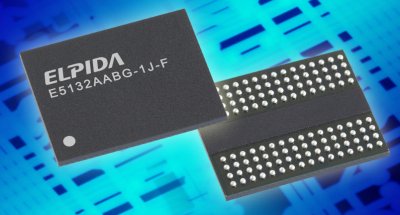
In the past a DDR2 controller with x32-bit wide interface required two x16-bit I/O DRAMs. Now, Elpida offers a 512-megabit DDR2 SDRAM with x32-bit I/O configuration as a one-chip solution. The advantages of this x32-bit solution over a two 256-megabit DDR2 (with x16-bit configuration) solution are as follows:
"Elpida's new x32-bit DDR2 product realizes a simpler board layout and it can support a four-layer board," said Yoshitaka Kinoshita, executive officer for Elpida's Digital Consumer Division. "Elpida's one chip solution based on the new product is expected to reduce customer's total system costs."Approximately 25% memory area reduction on the board Fewer package balls (40 balls) Approximately 20% less power consumption A one-chip solution delivers low EMI and better signal quality
Elpida developed x32-bit I/O DDR2 products to meet the need for small-size consumer electronics that feature 1.8V low-voltage operations and low-power consumption. Because the new x32-bit product is specially designed for consumer devices it is well suited for use in digital consumer appliances.
Product Features:
Target Market:512Mbit DDR2 SDRAM (x32-bit I/O configuration) using 70nm process technology Data transfer rate: 250Mbps to 1066Mbps (1GBytes/sec to 4.2GBytes/sec per DRAM device) ODT (On-Die-Termination): 50/75/150/225ohm Enhanced 225ohm ODT reduces power consumption Driver strength: normal/weak/quarter Reduces overshoot, undershoot noises
Digital TVs, set-top boxes (STB), personal navigation devices (PND), printers, digital still cameras, digital video recorders, projectors and more.
Mass production of the new x32-bit DDR2 SDRAM is scheduled to begin in September 2008. Because Elpida has a proven track record of device production and support for early product launches in the digital consumer market, more than 30 companies in Japan and elsewhere in Asia, North America and Europe have welcomed the product. As a result, business discussions are in progress.